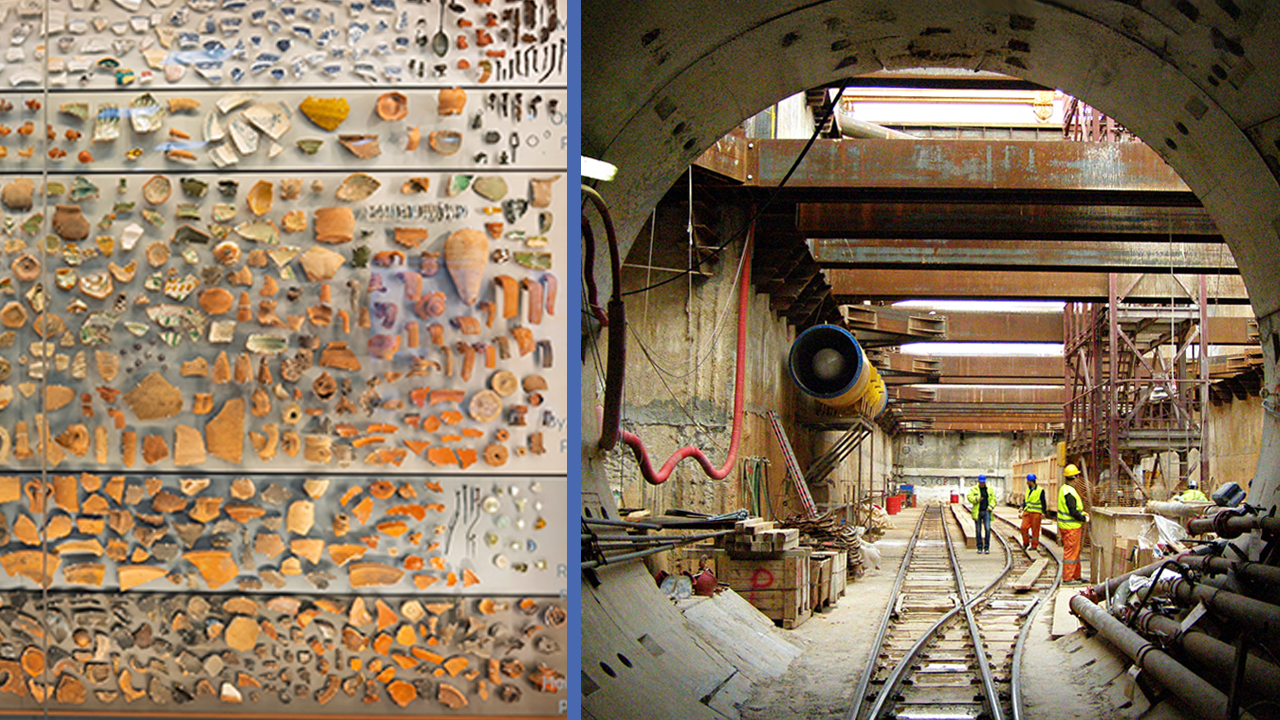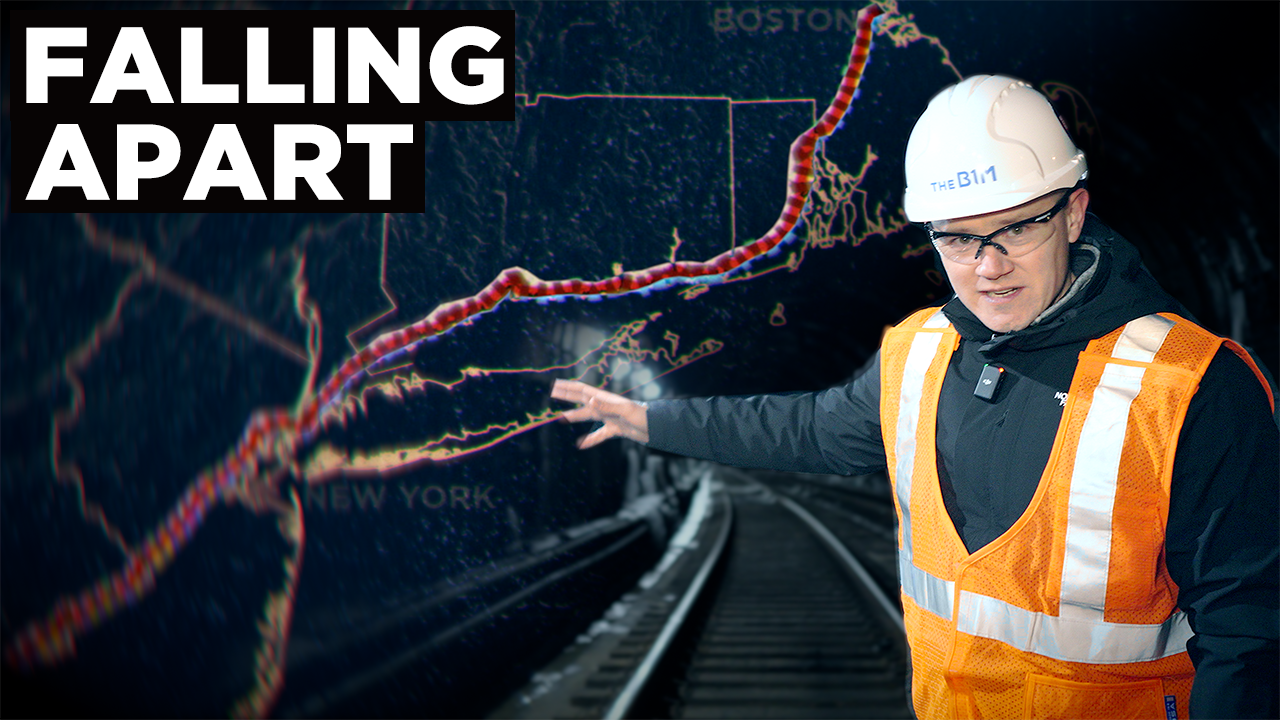How Fortnite is Teaching Kids to Build Cities
- Youtube Views 99,059 VIDEO VIEWS
Video narrated and hosted by Fred Mills. This video and article contain paid promotion for Epic Games.
Epic Games has teamed-up with Zaha Hadid Architects and AccuCities to create a photorealistic virtual version of London that anyone can edit.
LIKE many cities in Europe, London is pretty much ancient. Its roots date back to Roman times, well before the black cabs, double decker buses and multi million dollar apartments of today.
Frankly, this is not a city that's been designed for the 21st century and that creates a number of problems for the Londoners of today: everything from congestion to restriction on density and new buildings.
But what if you could change that? What if you could rebuild London from scratch?
The Problem With London
Unlike many cities across the US, London is not a grid. It's a mesh of streets spilling out in almost every direction.
Its a factor that, in many ways, contributes to the city's congestion problems. In 2019, drivers in London spent an average of 149 hours in gridlock costing the city around £4.9BN.

Above: New York (left) vs. London (right). A grid layout can be more efficient for those travelling by car. Below: London's Leadenhall skyscraper is shaped to protect historic site lines of St Paul's Cathedral.

Another problem with the city is that it doesn’t have enough of the buildings that it actually needs.
London has a mix of height restrictions and strict rules about what can be built where. There are the famous site lines protecting St Paul's Cathedral which have helped create a rather whacky skyline, particularly in the square mile City of London.
The affectionately nicknamed “Cheesegrater” slants so that the iconic 17th century cathedral can still be seen.
These same planning laws also restrict where tall buildings can be built. Despite several emerging districts, particularly to the south, London has two main groups of skyscrapers: one in City and another over at Canary Wharf, formally one of the busiest docks in the world.
It’s also no secret that London, like many other cities, has a housing crisis. There simply aren’t enough buildings for people to live in. This shortage of homes means prices are staggeringly high. In fact, a quarter of Londoners live in poverty after either paying their mortgage or paying rent.
It doesn’t help that where skyscrapers and higher density buildings can actually be built they then become offices or luxury apartments that are unaffordable, because of the nature of their location and their scarcity.
London Has Been Rebuilt Before
London was not a planned city. Long before the Gherkin and the Walkie Talkie, London was Londinium, an ancient walled Roman city established in 43AD.
While a lot of the original Roman settlement has been washed away or forgotten, much of it actually remains to this day.
You can still find segments of the original wall, and we still use many of those original streets. Even the iconic Oxford Street can trace its origins to the Romans.
Up until the 17th century London was built over these Roman ruins in the square mile. Then Medieval London spread further than this, enveloping the surrounding farmland.

Above and Below: London was once a Roman outpost and some of the original Roman walls still survive in the present day city.

In 1666, an enormous fire destroyed four-fifths of the city. 13,000 Tudor and early-17th century buildings were lost.
While London kept most of its streets there was some serious discussion about whether something grander should be built in its place, many wanted London to be rebuilt in the style of Paris with grand boulevards and monuments.
But London ultimately stayed the same, and just kept growing.
By 1884, thanks to the industrial revolution, London’s population exploded to nearly 2M, becoming the biggest and most powerful city in the world. Then it grew again to 6.5M by the end of the Victorian era.
London was now a sea of factories and slums, as well as grand palaces and residences.
In 1863 the Tube opened and suddenly boroughs that were miles apart could be easily accessed. It was the world's first underground passenger railway and it revolutionised London, allowing the city to expand even more.
Following the Blitz and World War II the city saw the largest urban expansion in its history. A lot had been decimated and now needed to be rebuilt.

Above: The Great Fire destroyed much of London in 1666.
London has actually been rebuilt many times during its history, but it’s never really been built entirely from scratch. Each iteration of the city has been built upon the last, from its Roman incarnation to after World War II. With Londoners hopefully taking from what came before and learning from it.
Re:Imagine London
Now Fortnite is encouraging a new generation of gamers to build a new, digital layer of the city with Re:Imagine London.
The initiative sees Zaha Hadid Architects team-up with Epic Games’ Fortnite and AccuCities to create a photorealistic “island” of the city.
Speaking exclusively to The B1M, Nils Fischer, Director at Zaha Hadid Architects explained: “Reimagine London is a giant urban sandbox living in one of the most popular computer games,”
“[It's] a game built inside Fortnite using the UEFN tools, which allows players to design their own buildings in the centre of London,” added James Golding, Technical Director at Epic Games.
“So we've recreated accurately a section of London, and it allows players to go in and use their imagination, work together to create really interesting new buildings based on the expertise in the design that Zaha Hadid Architects bring to it.'
“We wanted to engage the next generation of citizens of cities,” Shajay Bhooshan, Associate Director at Zaha Hadid Architects, told The B1M.

Above: Re:Imagine London takes players to the most iconic parts of the city and lets them make edits. Image courtesy of Epic Games.
“The idea of the project is to give as many people an intuitive view of ideas for future cities, and give them an environment where they can build and test ideas for us to learn from,” adds Fischer.
“So this is a game very unlike other sorts of games that you might have seen in Fortnite up until now. And so what we're trying to do here is really push what's possible using UEFN, using these new tools inside Fortnite Creative,” explains Golding.
“Re:imagine London covers a central part of the city, starting with St Paul's, which is pretty much the heart of all viewing corridors of London. It's the nexus of the city, and it stretches along the riverfront and is mirrored on the south bank of the river,” says Fischer.
“It's between St Paul's Cathedral and the Tate Modern, across the Thames: a really iconic area of London. Within that area there are four sites that we've designated where players can create their own buildings,” adds Golding.

Above and below: The photorealistic model of St Paul's Cathedral. Image courtesy of Epic Games.

Players place down blocks or voxels on a designated site within central London. Each site has its own height restrictions and special features, modelled on their corresponding sites in the real world London.
Players can chose from six different categories of voxel, including commercial, residential, office, walkway parks and structural pieces.
"When you put them next to each other, that's when you trigger scoring." explains Golding. “Putting a park piece next to a residential piece will give you a score because those pieces go really well together. But not only to give you a score, but actually changes the way the residential piece looks. And so you can make your site look more interesting and vibrant by using these different combinations together.

Above: Players can chose from a range of building elements. Image courtesy of Epic Games.
“So it gives you a set of options, but it's absolutely unconstrained when it comes to how you want to bring them together,” adds Fischer. “It's collaborative, it's a creative experience. And it allows you to explore what others did or what you built yourself with absolutely no strings attached.”
The Rules of The Game
You get a better score - and make happier NPCs - by creating areas that are walkable, have a mix of residential and commercial spaces, and respond to the needs of the city.
“You want to put walkways next to commercial places,” Golding told The B1M. “You want to put offices on top of residential pieces to get these interesting combinations that really respond as you're playing the game. So we're encouraging players to experiment, to try different things. And one of the most exciting things is that it's multiplayer. And so you're playing with other people, you're seeing what they're doing and you're responding to it.”

Above: Players can walk across the city's Millennium Bridge in Re:Imagine London. Image courtesy of Epic Games.
Some of the sites have pre-existing structures on them, you can completely ignore them, but if you use them to create something new the game will reward you.
“So the underlying motivation for the game or the goal of the game is to make people aware of land and buildings as a civic resource. And how to most effectively use it for the greatest common good,” says Bhooshan.
“Participants can propose changes, come up with ideas, vote on options, or just have fun,” adds Fischer.
Through the game, players can learn firsthand the problems with London’s current urban layout
“London is a historic city which has gone through many phases of its evolution” explains Bhooshan. “And only more recently have people become a lot less engaged with the way the city is growing. And so we wanted to use the medium of Fortnite to make people more engaged and more aware of certain urban issues that affect us all.”
Mixed-Use Neighbourhoods
The idea of a mixed-use area has only recently come back into favour.
Following World War II cities began dividing neighbourhoods and districts into their purposes. One part of the city would be for commercial purposes only, another for where people should live, to shop, and so on. Urban planners are now realising that this maybe isn’t the best idea.

Above: Forget the London weather, why not put a beach on the Thames? Image courtesy of Epic Games.
“Throughout through the later half of the 20th century, particularly after the war where London had to be rebuilt, a lot of single use areas began to be formed because it was easier to build single use, and it was also higher performing for that particular use." Fischer told The B1M. “Reimagine London allows for people to reimagine their neighbourhoods, and in particular, reimagine [them] for a wide variety of mixed uses."
The Need for Density
Density is also being reassessed. For years it's been something of a feared word among the general public, and people often associate "dense" cities with overcrowding and claustrophobia. But density, when done right, can actually be something fantastic.

Above: Density and mixed-use neighbourhoods are rewarded in the game. Image courtesy of Epic Games.
“The issue facing 21st century London in particular is one of density. Urban density in London is significantly lower than it is in Paris, for example. It's about three to foud times less dense than central Paris. And not many people are actually aware of that,” explained Bhooshan.
“One way to make better use of land as a, as a civic resource, as a communal or collective resource is to have more denser urban environments.”
Zaha Hadid Architects and Epic Games have created Reimagine: London to show that everyone can engage in their city’s design, and that concepts like densification and mixed-use neighbourhoods are important to understand.
Despite their traffic and small flats, cities may be the best thing we’ve ever made: and now you can be a part of that too.
Re:Imagine London will be available to play in Fortnite from 16:00 (BST) on 18 September. Play by downloading Fortnite on your platform of choice and searching ‘Re:Imagine London’ or ‘1442-4257-4418’ in game.
You can learn More about Re:Imagine London’s development here.
Epic Labs Creator Page - https://www.fortnite.com/@epiclabs
This video and article contain paid promotion for Epic Games.
We welcome you sharing our content to inspire others, but please be nice and play by our rules.








